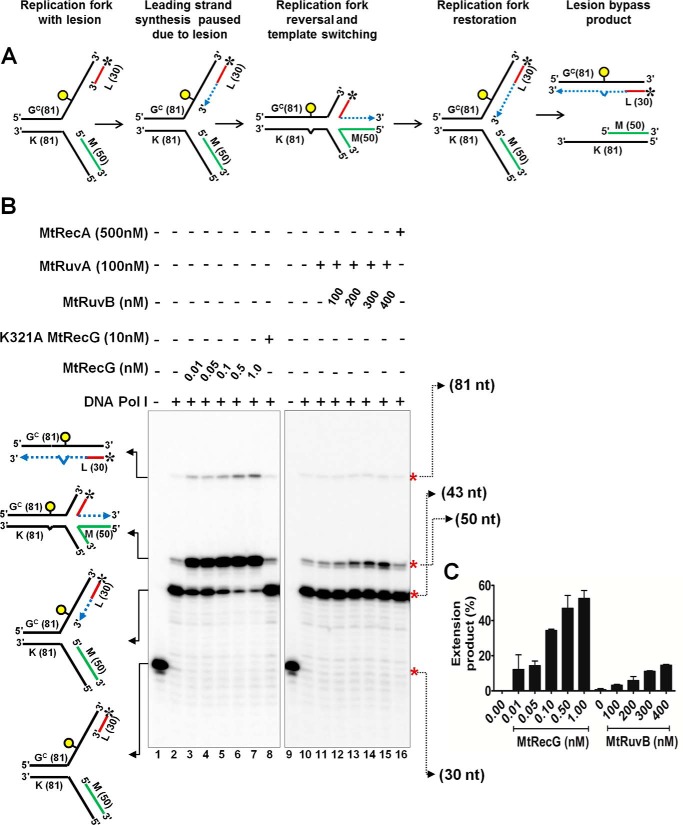FIGURE 10.
M. tuberculosis RecG but not RuvAB promotes lesion bypass via template switching mechanism. A, schematic representation of lesion bypass via template switching mechanism that involves fork reversal and DNA synthesis using lagging strand as a template and fork restoration. The asterisk indicates 32P label and circle indicates lesion. Dashed lines represent polymerase extension. B, polymerase reactions with10 nm stalled replication fork substrate with DNA polymerase I Klenow fragment (0.05 units) in a reaction buffer containing 1 mm ATP and 5 mm MgCl2 (lane 2 and 10). In a similar reaction mixture, after addition of Klenow polymerase, indicated concentrations of MtRecG, K321A MtRecG, MtRuvA, MtRuvB, and MtRecA were added, and reactions were monitored separately. Lanes 1 and 9 represent stalled replication fork in the absence of any proteins. Polymerase extension products were resolved on 15% denaturing polyacrylamide gel and visualized by autoradiography. C, quantitative analysis of polymerase extension products generated in the presence of MtRecG and MtRuvAB. The error bars represent standard error of the mean (S.E.) from three independent experiments.

